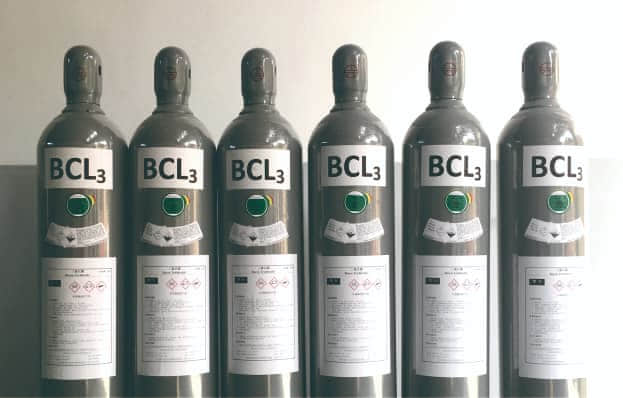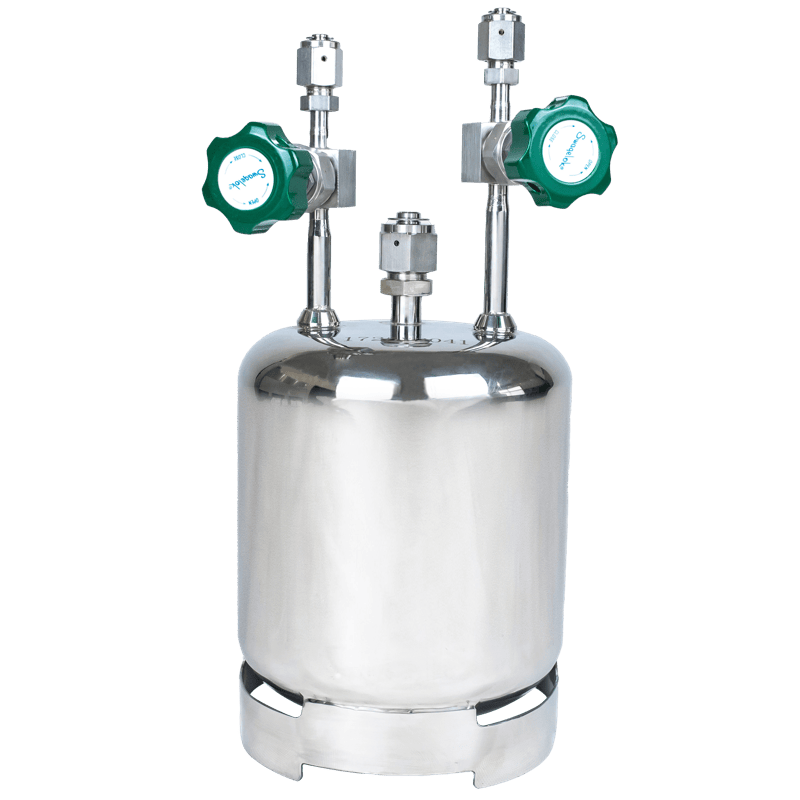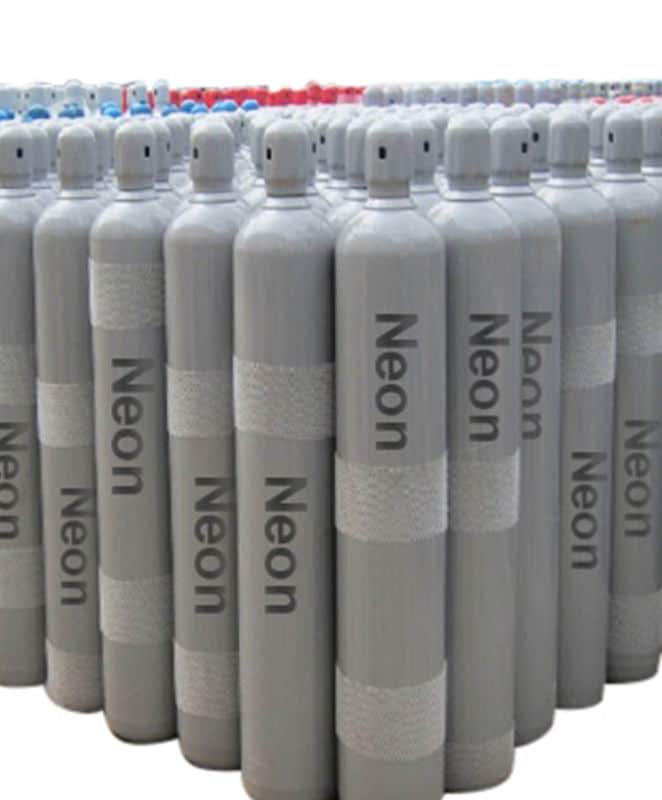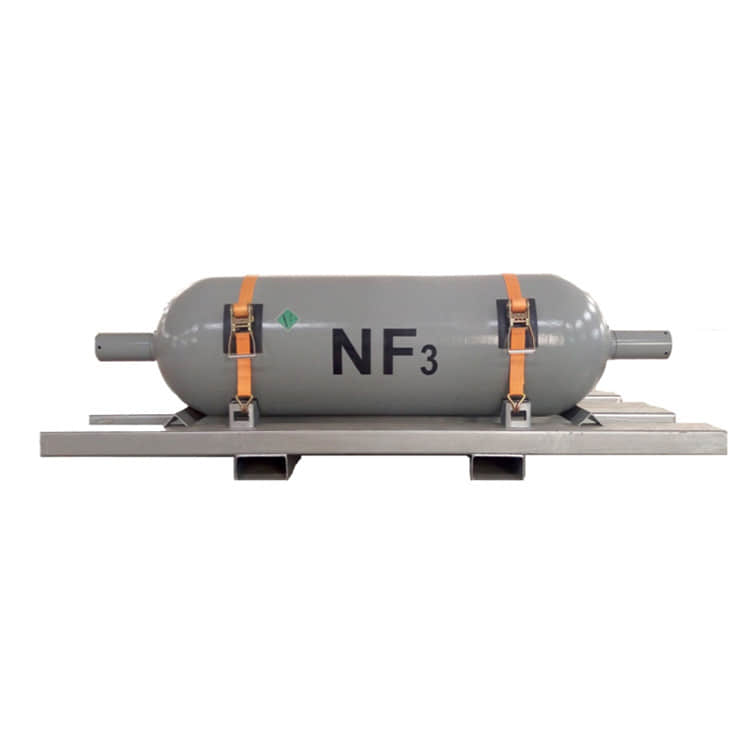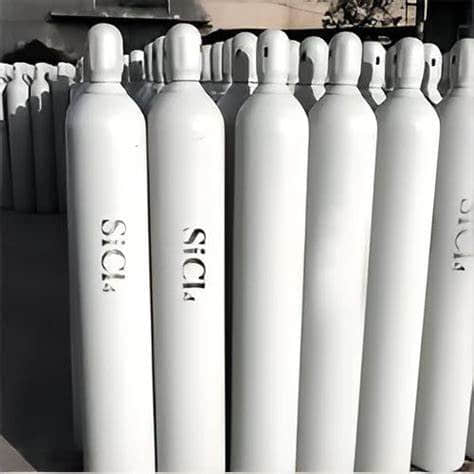Name: Boron trichloride Purity: 99.99%~99.9999% Packing: 10L-926L Chemical formula: BCI3 CAS login number: 10294-34-5 Molecular weight: 117.19 Electronic grade boron trichloride is a high-purity boron trichloride. It is mainly used in the fields of semiconductors and integrated circuits, with a wide range of application scenarios and strong irreplaceability. In the semiconductor field, electronic grade boron trichloride is mainly used in diffusion, ion implantation, dry etching and other processes in the production of silicon semiconductor devices and integrated circuits. It can be used for etching metals, metal compounds, and alloy materials such as aluminum, molybdenum disilicide, tungsten disilicide, and titanium silicon alloys. Electronic grade boron trichloride is also widely used in third-generation semiconductors such as gallium nitride (GaN) and silicon carbide (SiC). In the etching of aluminum metal wiring, electronic grade boron trichloride has strong irreplaceable properties. Aluminum is the most important wire material in semiconductor preparation, with advantages such as low resistance, easy deposition and etching. The etching of aluminum metal wiring usually involves the reaction of chlorine, aluminum, and chlorine to produce volatile aluminum trichloride (AlCl3), which can be extracted along with other gases in the etching chamber. Electronic grade boron trichloride can reduce the natural oxide layer, ensure etching, and easily react with oxygen and water, absorbing water vapor and oxygen in the reaction chamber, thereby reducing the rate of alumina generation. In addition, electronic grade boron trichloride can also be used to manufacture important chemical raw materials such as high-purity boranes and chlorinated compounds. It should be noted that electronic grade boron trichloride is a toxic substance with a corrosive and strongly irritating odor. Special attention should be paid to safety issues during transportation and storage.
Leakage emergency response
Quickly evacuate personnel from the contaminated area to the windward area and immediately isolate them for 150 meters, with strict restrictions on entry and exit. It is recommended that emergency response personnel wear self-contained positive pressure respirators and protective clothing. Cut off the source of leakage as much as possible. If it is a gas, ventilation should be reasonable to accelerate diffusion. Dilute and dissolve with spray water. Build embankments or dig pits to collect a large amount of wastewater generated. If possible, use an exhaust fan to send residual or leaked gas to the water washing tower or a fume hood connected to the tower. Leaking containers should be properly handled, repaired, and inspected before reuse. If it is a liquid, absorb it with sand, vermiculite, or other inert materials. If there is a large amount of leakage, build a dike or dig a pit for storage; Spray water is used to cool and dilute the steam, protect the on-site personnel, but do not directly spray water on the leakage point. Transfer to a tank truck or dedicated collector using an explosion-proof pump for recycling or transportation to a waste disposal site for disposal.
Protective measures
Respiratory system protection: When the concentration in the air exceeds the standard, wear a self priming filter type gas mask (full face mask). It is recommended to wear an oxygen respirator during emergency rescue or evacuation.
Eye protection: Protective measures have been taken in respiratory system protection.
Body protection: Wear rubber acid and alkali resistant clothing.
Hand protection: Wear rubber gloves.
Other: After work, take a shower and change clothes. Maintain good hygiene habits.
Eye protection: Protective measures have been taken in respiratory system protection.
Body protection: Wear rubber acid and alkali resistant clothing.
Hand protection: Wear rubber gloves.
Other: After work, take a shower and change clothes. Maintain good hygiene habits.

